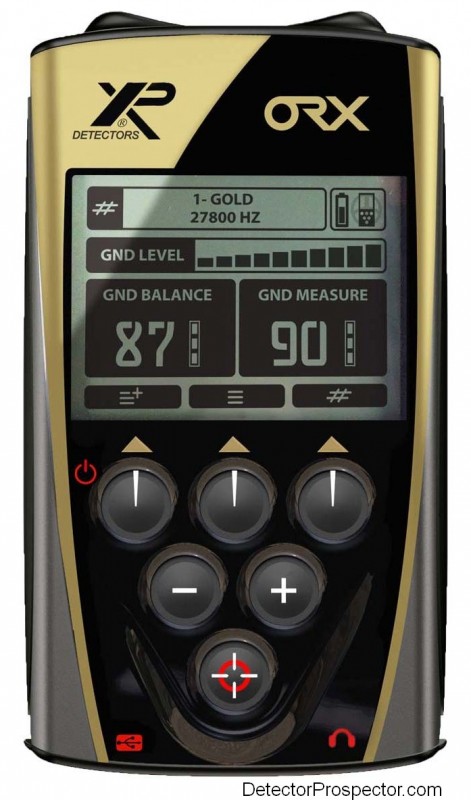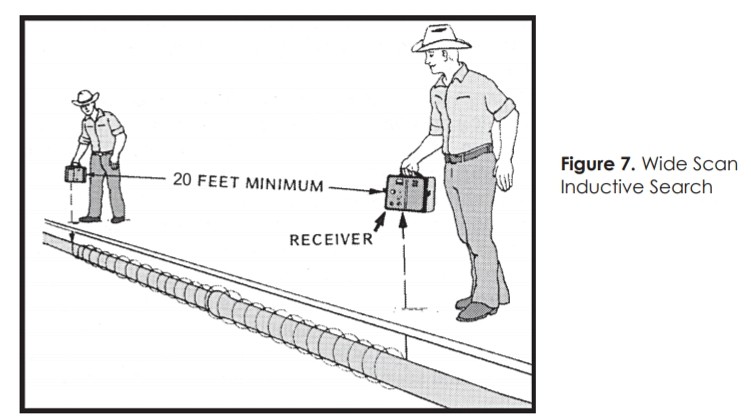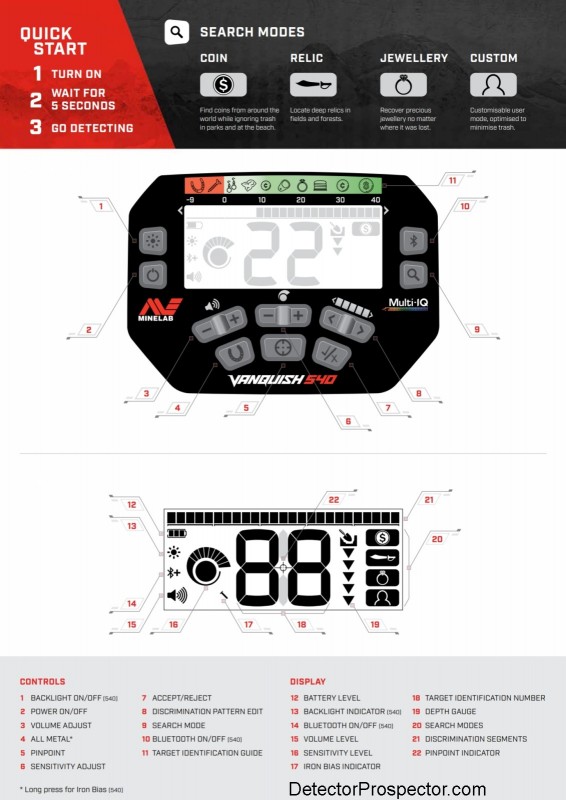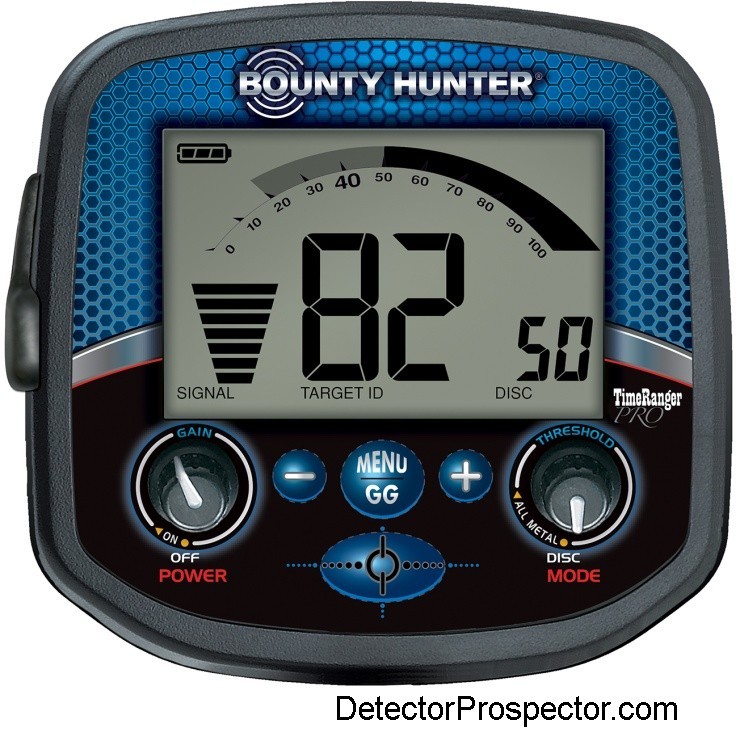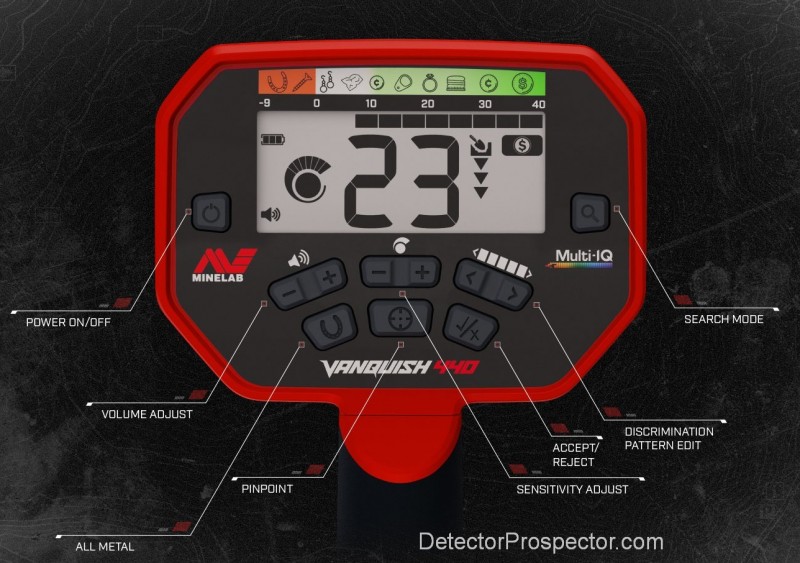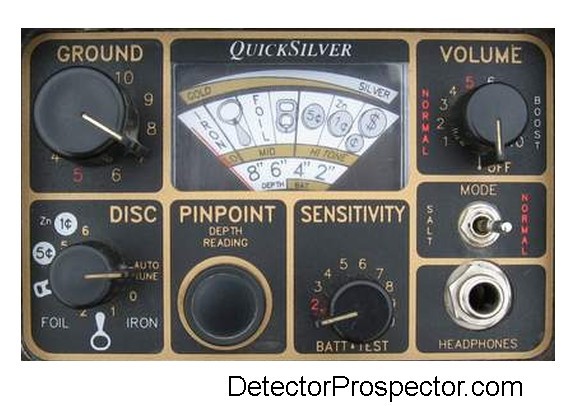-
Posts
19,835 -
Joined
-
Days Won
2
Content Type
Forums
Detector Prospector Home
Detector Database
Downloads
Everything posted by Steve Herschbach
-

XP Orx External Speaker Volume
Steve Herschbach replied to Steve Herschbach's topic in XP Metal Detectors
I normally use headphones but when in some quiet locations it's nice to go without. The Gold Monster has such a loud external speaker volume I never used headphones with it. I remembered the Deus was not too bad actually so wondered also about ORX. Thanks for the answers. -
Unless it is in a large steel box or something similar save your money almost no detector will find what you are looking for that deep.
-
It’s my understanding the volume of the external speaker on the ORX is preset and fixed. Does anyone use the ORX without headphones and how do you find the volume to be? If you have used the Deus, any comparison to it?
-

General Questions About The Nox And Setups
Steve Herschbach replied to Kentucky's topic in Minelab Equinox Forum
If you are starting out stay simple. Jumping into 50 tones or anything you are not comfortable with will just make your life harder. Why 50 tones? More audio information for those that hunt by ear. More information overload for those that may not need it. If all you want to do is dig non-ferrous there is nothing wrong with two tones. I am a proponent of the default stock modes for beginners. Beach detecting? Beach 1 for dry beach, Beach 2 for water. Adjust sensitivity as high as is possible while keeping the detector stable. For hunting iron make sure you have the latest update so you can access the new Iron Bias 'F2' settings, which have an improved capability to reject a much wider range of difficult iron targets, including bottle caps. I prefer Park 1. Use the defaults and lower sensitivity and adjust the F2 setting to get the degree of quietness on iron you prefer. There is no numbers for settings I can give you as I adjust differently for every situation I am in. I adjust to get the machine to act like I want depending where I am and the settings just end up wherever they need to be to make that happen. -
From a previous thread: These "two box detectors" can be used as an integrated unit connected by a rod. These detectors are in effect a very large coil and can only detect objects about the size of your fist or larger, but at great depths depending on ground mineralization. These are induction balance detectors and a large coil pulse induction model may work better in severe soils, especially on objects that are small enough to be borderline targets for this type of detector. However, you can also use the transmitter and receiver separately to create a larger search field, that can be used to look for large hidden bodies like large veins or ore deposits. This is what Fisher calls a Wide Scan Inductive Search on page 12 of the Fisher Gemini-3 Operating Manual: Wide Scan Inductive Search This mode of operation is the preferred method for searching a large area quickly. Two operators are required and the handle assembly is not used. The Wide Scan Inductive Search mode is practical only when searching for ore veins, pipes or cable 40 feet long or more. If the operators are too close together, “direct air coupling” will result, meaning the receiver is detecting the Transmitter signal directly through the air instead of through a buried conductor. Figure 7 - Wide Scan Inductive Search Set Up Two operators line up at least 20 feet apart, one with the receiver and one with the transmitter, parallel to the assumed direction of the buried conductor. The transmitter and receiver should be in line with each other, facing the same direction. Tuning 1. Set the transmitter: Power: ON 2. Set the receiver: Power: ON Sensitivity: ZERO 3. Slowly increase the SENSITIVITY control until the audio signal is heard, then reduce SENSITIVITY until the audio just disappears. This is the point at which “air coupling” has been eliminated. Operating 1. Keeping the receiver and transmitter sections in line, the two operators can now walk their predetermined search pattern. The SENSITIVITY control should be checked periodically to ensure that the receiver is tuned just below the “air coupling” threshold. 2. If both operators cross the same conductive body (pipe, cable, ore vein, etc.) at approximately the same time, the receiver tone and meter will rise to indicate its presence. The receiver operator should alert the transmitter operator that they have detected a conductive object. 3. The receiver operator should then hold his position while the transmitter operator moves back and forth for the strongest receiver response. At this point, the transmitter operator should stop and place the instrument on the ground with the handle grip on top. 4. The receiver operator can then pinpoint the buried object by moving the receiver back and forth in line with the transmitter. The object should be directly beneath the point of maximum response. 5. The receiver operator may then trace the signal along the length of the unseen object as described in the Inductive Trace section (page 12). The methodology above describes looking for a pipe or buried fuel tank. You can however find a very detailed expansion of the subject as regards prospecting on pages 46 - 52 of the Handbook of Geophysical Prospecting Methods for the Alaskan Prospector under the heading "Electromagnetic Methods". This publication is an older one but this type of detecting is even older, dating back to the original two box Fisher Metalloscope of the 1930's. The booklet is written for the practical layman prospector and so describes several geophysical prospecting methods in a relatively understandable manner. See also the discussion starting on page 4 of Geophysics For Mineral Exploration - A Manual For Prospectors for more up-to-date information on the subject.
-
You are creating a virtual search coil with the box spacing. Two people can hold the boxes 10 feet apart for instance to create a 10 foot or 20 feet apart to create a 20 foot coil. Again, refer to the manual. The rod set is creating a 4 foot coil but you could make a 6 foot coil if you wanted. Like all coils, the larger the coil the deeper you go, but the larger the item needed to trigger a signal. Smaller configurations are more sensitive to smaller items but don’t go as deep.
-
The Gemini can be used without the rod as described in the manual. The Gemini is sold as the TW 6 locator for the utility market and comes without the rod. The rod not needed per se and you do not need the adjustment even if you use a rod. It just puts the finest tune possible on the setup if used that way. The rods are sold separately, part number 202727. Making rods would be nothing more than drilling holes in aluminum rod. The adjustment setting is just a screw that tilts the box, getting the tilt mechanism right without seeing one first might be challenging. I recall the end attached to the box just spins somehow while the screw part is threaded through the rod but it’s been a long time since I operated one of these so it’s kind of vague. The inductive coupler and line trace function works great.
-
Minelab Vanquish 440/540 User Manual Version 4901-0305-2 Minelab Vanquish 440/540 Instruction Manual Minelab Vanquish 340 Instruction Manual Minelab Vanquish Color Brochure
-
Please link to manuals in the database instead of uploading duplicate copies - thanks! You are aligning / repositioning the transmitter/receiver/attachment rod to optimal location. Two box detectors are a large coil, a transmit loop and a receive loop. When you make a search coil the two loops are positioned to find the ”null”. You are doing the same thing here.
-
I agree. That huge ground phase number in all metal is almost worthless while the info you really need is on that hard to see “speedometer” bar. I love the all metal mode on the GBP/F19/G2+ and that one change would be a major improvement for me. Ground phase information is almost totally irrelevant to most of my detecting and in any given area rarely changes anyway.
-
The Gold Bug Pro / F19 / G2 series has been around for years and lots of opinions can be found. I’ve owned all three. General consensus is great on low conductors and ok on high conductors. If you are hunting gold, bullets, buttons, etc. it’s about as good as it gets. If you are chasing silver coins, lots of detectors will do as well or better.
-

Sea Hunter Vs Equinox
Steve Herschbach replied to Mada's topic in Metal Detector Advice & Comparisons
The Sea Hunter has no ground balance control and being tuned to ignore saltwater means it has poor sensitivity to small gold nuggets. It is therefore not recommended as a gold prospecting detector. -

Goldmaster 4b Shaft Conversion Completed
Steve Herschbach replied to devilsrenegade's topic in White's Metal Detectors
Very nice! I moved both your threads to the White's Forum and left links from both the DP Forum and Comparisons Forum so more people can see your handiwork. Thanks for posting. -

Sea Hunter Vs Equinox
Steve Herschbach replied to Mada's topic in Metal Detector Advice & Comparisons
The Sea Hunter is a Pulse Induction (PI) detector that detects all metals. You dig everything. A VLF or multifrequency detector like the Equinox offers discrimination that allows you to not dig near as much trash, items like bottle caps and hair pins. In white sand low mineral beaches derived from coral reefs there is not a lot of benefit to using a PI detector though you might get a little extra depth, especially if the PI employs larger coils. The real benefit in a PI comes on beaches derived from volcanic material or other mineralized rock, such as in the northwestern U.S. or the Hawaiian Islands, to name a couple examples. These mineralized beaches severely impede the depth of the discrimination type detectors while PI detectors are much less affected. So for sheer power but dig everything you use a PI. To help eliminate excessive digging of trash targets use a VLF or multifrequency type detector. -

Multi Iq For Everyone.... Vanquish
Steve Herschbach replied to Tometusns's topic in Minelab Metal Detectors
Plus some single frequency options on Equinox. But basically I like the way you are looking at it Mike. The CZ was one of my favorite all time detectors and why FT has sat on the analog version for so long with no digital version offered will always be a mystery to me. My CZ-5 with 5” coil was awesome and I would have bought a digital CZ in a heartbeat. No real features needed, just put a CZ in the Omega/F19/Gold Bug box. Anyway, just like CZ there is no reason why one basic frequency mix can’t work for everything as a general purpose device, and I agree that is what Vanquish appears to do. Fisher CZ-5 control panel Minelab Vanquish 440 control panel

